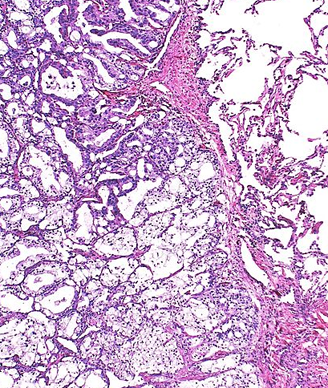Darolutamide Combo Yields Sustained Survival in Metastatic HSPC
Results from a post hoc sensitivity analysis of the phase 3 ARASENS trial appear to affirm the primary overall survival analysis findings.
“Findings from this post hoc sensitivity analysis support the primary OS analysis,” according to Neal D. Shore, MD, FACS.

Combining darolutamide (Nubeqa) with androgen deprivation therapy (ADT) and docetaxel continued to elicit an overall survival (OS) benefit in patients with metastatic hormone-sensitive prostate cancer (mHSPC), according to post hoc analysis findings from the phase 3 ARASENS trial (NCT02799602) presented during the 2024 Genitourinary Cancers Symposium.1
In the post hoc sensitivity analysis, investigators counted subsequent systemic antineoplastic therapy in patients who were not available for assessment as an OS event. There was an HR of 0.47 favoring darolutamide vs placebo (95% CI, 0.40-0.54; P < .0001), with a median OS of 49.0 months (95% CI, 45.2–not estimable [NE]) with darolutamide vs 31.6 months (95% CI, 29.7-33.8) with placebo.
“Findings from this post hoc sensitivity analysis support the primary OS analysis,” said Neal D. Shore, MD, FACS, medical director for the Carolina Urologic Research Center, in his presentation of the poster.
The phase 3 ARASENS trial randomly assigned 1306 patients on a 1:1 basis to receive 600 mg of oral darolutamide or placebo twice daily plus ADT and 6 cycles of docetaxel.2 The primary end point was OS, assessed using a log-rank test with 95% CI calculated using the Cox model. Those on the trial with no documented death were censored at the data cut-off or the last known alive date, whichever occurred first.
The primary OS analysis was published in the New England Journal of Medicine in 2022. At data cut-off of October 25, 2021, median follow-up was 43.7 months in the darolutamide group and 42.4 months in the placebo group. At this time, 229 of 651 patients (35%) in the darolutamide group and 304 of 654 patients (46%) in the placebo group had died, with a 32.5% lower risk of death in the darolutamide group (HR, 0.68; 95% CI, 0.57-0.80; P < .001).1,2 The median OS with darolutamide was NE (95% CI, NE-NE) compared with 48.9 months (95% CI, 44.4-NE) with placebo.
Investigators noted that 374 of 495 patients (75.6%) who entered follow-up in the placebo group received subsequent life-prolonging therapies, primarily different androgen receptor pathway inhibitors besides darolutamide. This had the potential to impact OS outcomes.
In the post hoc sensitivity analysis, 776 patients were counted as having an event, either death or censored patients receiving subsequent therapy, including 300 of 651 (46.1%) in the darolutamide arm vs 476 of 654 (72.8%) in the placebo arm.1
Planned sensitivity analyses for OS were also performed. Log-rank test and Cox model without stratification showed an HR of 0.69 favoring darolutamide (95% CI, 0.58-0.82; one-sided P <.0001). In a log-rank test and Cox model using stratification factors collected from electronic case report forms, the HR was 0.68 (95% CI, 0.57-0.81; one-sided P <.0001). The log-rank test and Cox model using extent of disease stratification factors based on central imaging review resulted in an HR of 0.68 (95% CI, 0.57-0.81; one-sided P <.0001).
At data cut-off, 299 of 651 patients in the darolutamide arm (46%) and 125 of 654 patients in the placebo arm (19%) continued receiving study treatment. Forty-eight percent in the darolutamide arm and 76% of those in the placebo arm were eligible for subsequent therapy, and 34% of the darolutamide arm and 60% of the placebo arm ultimately received subsequent systemic antineoplastic therapy. The time to first subsequent systemic antineoplastic therapy, which was a key secondary end point of ARASENS, was superior in the darolutamide arm (HR, 0.39; 95% CI, 0.33-0.46; P < .001).2
In terms of safety, the median duration of treatment was 41.0 months in the darolutamide arm vs 16.7 months in the placebo arm.2 Overall incidence of treatment-emergent adverse events (TEAEs) was similar between the groups, with the cumulative incidence of TEAEs commonly associated with androgen receptor inhibitor therapy being low in both arms, particularly when adjusted for exposure. TEAEs led to discontinuation in 13.5% in the darolutamide group vs 10.6% in the placebo group.1
“In conclusion, the results of the post hoc sensitivity analysis were consistent with and supportive of the ARASENS primary OS analysis,” said Shore. “These data reinforce combination of darolutamide with ADT and docetaxel as an effective and well tolerated standard-of-care option for early treatment intensification in patients with mHSPC.”
References
- Shore ND, Tombal BF, Hussain M, et al. Overall survival with darolutamide vs placebo in combination with androgen-deprivation therapy (ADT) and docetaxel: A sensitivity analysis from ARASENS accounting for subsequent therapy. J Clin Oncol. 2024;42(suppl 4):166. doi:10.1200/JCO.2024.42.4_suppl.166
- Smith MR, Hussain M, Saad F, et al. Darolutamide and survival in metastatic, hormone-sensitive prostate cancer. N Engl J Med. 2022;386(12):1132-1142. doi:10.1056/NEJMoa2119115
Frontline Chemo-Free Regimen Supported in HR+/HER2+ Breast Cancer Therapy
January 1st 2024Combining anastrozole with palbociclib, trastuzumab, and pertuzumab as a frontline therapy for hormone receptor–positive, HER2-positive breast cancer may avoid some of the toxicities associated with chemotherapy, says Amy Tiersten, MD.